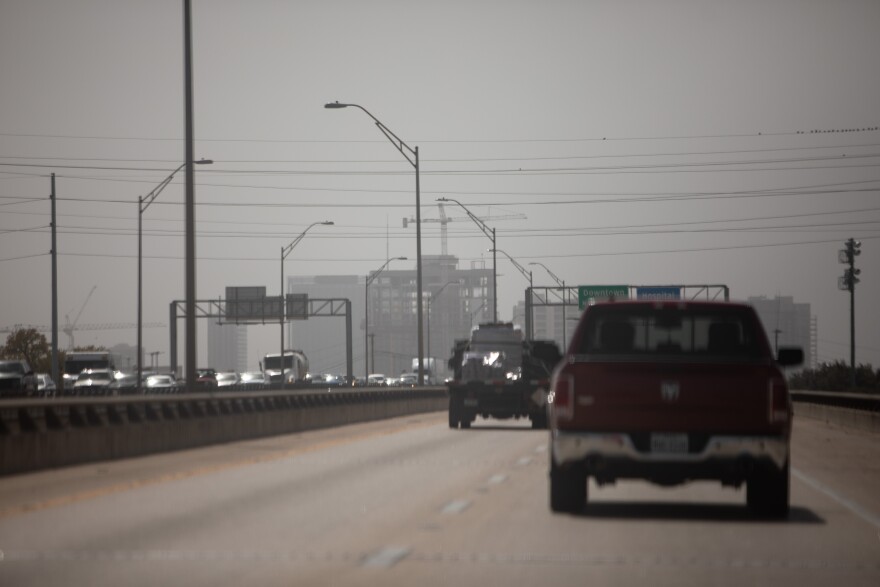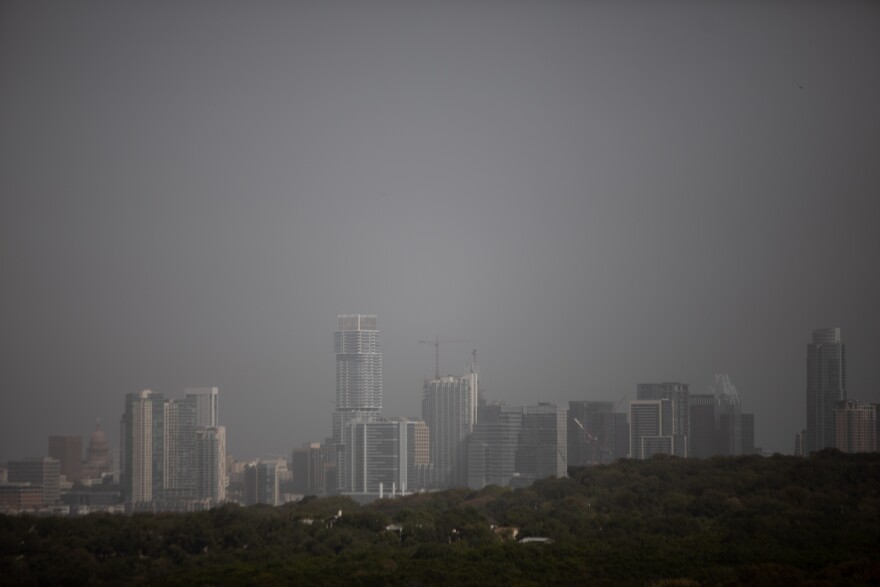As COVID-19 spread across the globe in the spring, people noticed a strange side-effect of the pandemic: The air was getting cleaner. Stay-at-home orders, along with the economic crash caused by the outbreak, meant less industrial and transportation-related pollution.
But not necessarily in Austin.
A review of Austin air quality by the Capital Area Council of Governments released earlier this year found that some harmful pollutants, like nitrogen dioxide and ground level ozone, did decrease in March and April. But the levels of other air pollutants, like fine particulate matter and carbon monoxide, actually increased in those early months of lockdown.
Andrew Hoekzema, director of regional planning and services at CAPCOG, called the findings “somewhat surprising,” because vehicle traffic, the main source of much of the region’s air pollution, had dropped significantly even while emissions rose.
CAPCOG is now partnering with the City of Austin to figure out why this happened.
“With particulate matter, the question is, just how much of an impact does transportation have on these concentrations anyway?” Hoekzema said. “The more surprising [result] perhaps was carbon monoxide, because transportation is more than half of the source of carbon monoxide emissions within our region.”
Hoekzema said getting answers will require untangling the “complex interaction” between vehicle emissions, meteorology and other factors that impact air quality.
Possible Causes
People tend to think of vehicle-related air pollution as the result of a simple process. Fuel goes into a car, is burned for energy and results in emissions from the tail pipe.
While that is true, the amount and kind of air pollution caused by the process can vary depending on certain factors.
“A 50% reduction in traffic does not necessarily mean a 50% reduction in emissions,” Hoekzema said. “That may not mean that there's also a 50% reduction in freight traffic, and freight and trucks is a very significant source of air pollution.”

He said the speed at which personal vehicles and trucks move, as well as the type of fuel used, can change their emissions.
At the onset of the pandemic, federal and state environmental authorities issued waivers to refineries allowing them to change the content of their gasoline.
“It is possible that those waivers had some impact on the carbon monoxide emissions from these vehicles,” Hoekzema said.
Local temperature and sunlight also affect how some pollution, like ozone, forms in the air, and weather patterns move pollution in and out of the area from other parts of the world.
To untangle how all these various inputs may have contributed to air quality this year, Hoekzema said CAPCOG will review data from more air monitors and from longer periods of time.
The Plan
During its initial air quality review, CAPCOG used information from three Texas Commission on Environmental Quality air quality monitors in the Austin area. Typically, more data would have been available, but a fourth TCEQ monitor, located at Murchison Middle School, was offline because of construction at the school.
The new study will include records from other ozone monitors CAPCOG operates and independently operated air sensors that share data with the Environmental Protection Agency. It will also look at a longer timeframe to compare how local air quality has changed through the years.
The study could also include computer modeling to reveal how bad the pollution would have been this spring without a reduction in vehicle traffic.
Good Policy
Right now, policy to fight air pollution in Central Texas focuses on reducing traffic congestion. Officials hope that the study will result in better policy by clarifying the link between vehicle emissions and pollution.
For example, Phoebe Romero, an environmental program coordinator with Austin’s Office of Sustainability, said she believes the research should help evaluate the effectiveness of telecommuting as a pollution-mitigation strategy.
CAPCOG’s Hoekzema agrees.
“If we can take what's happened here as far as a sort of major unintended social experiment in behavior change and figure out what we can learn from it …,” he says, “it should result in better health outcomes.”
Got a tip? Email Mose Buchele at mbuchele@kut.org. Follow him on Twitter @mosebuchele.
If you found the reporting above valuable, please consider making a donation to support it. Your gift pays for everything you find on KUT.org. Thanks for donating today.





